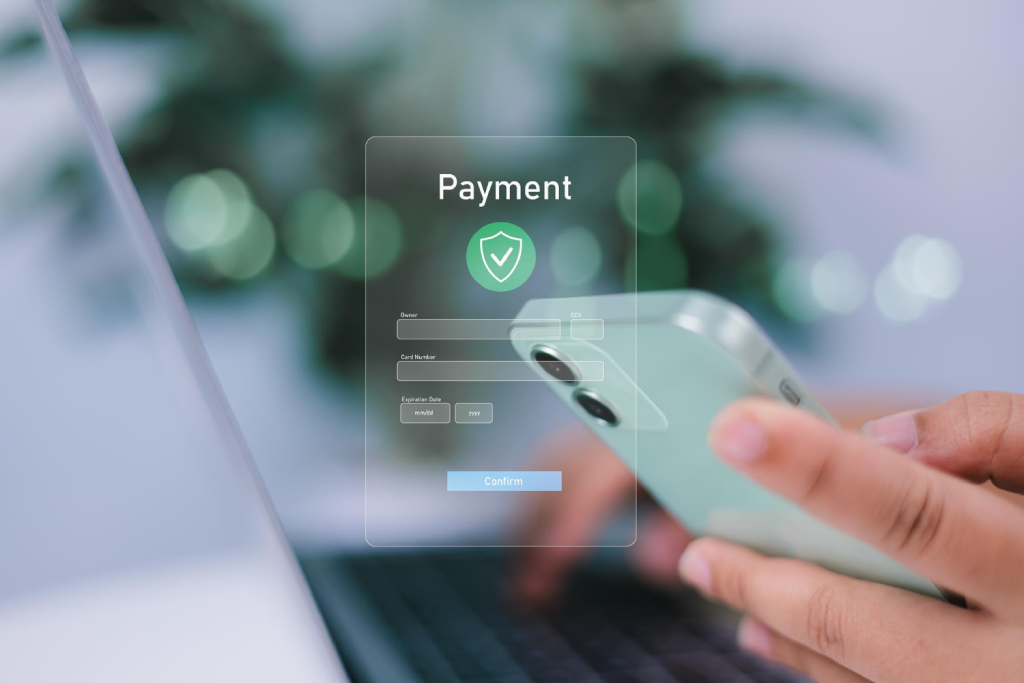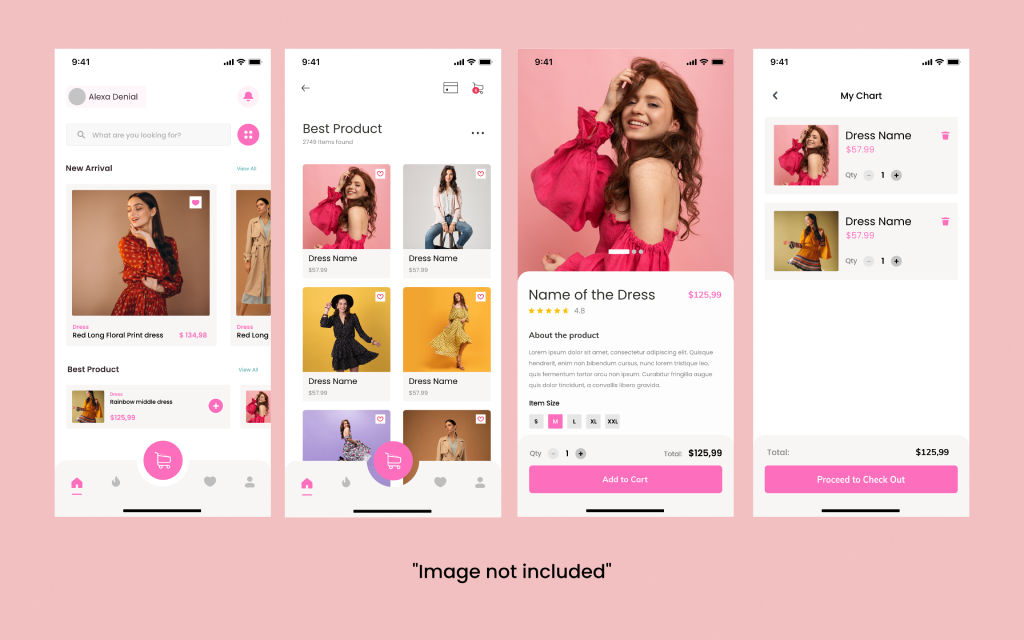Table of Contents
ToggleThe ecommerce industry has changed the way people shop directly through mobile apps. Some leading fashion retailer brands like H&M have set benchmarks for mobile shopping experiences.
The H&M mobile app is designed to provide a smooth and engaging shopping experience, featuring personalized recommendations, easy navigation, secure payment options, and loyalty rewards for their users.
If you are an eCommerce business owner and want to develop a similar fashion retail app H&M, one of the most critical questions that comes to mind: How much does it cost to build an app like H&M?
The cost to develop a fashion shopping app depends on various factors, including features, technology stack, mobile app development team location, and maintenance.
In this blog, we provide you with a detailed breakdown of the H&M app development cost, helping you estimate the budget for your online fashion store app development.
Key features of an App like H&M
Developing a shopping mobile app like H&M requires integrating several essential features that increase user experience and smooth online shopping.
Below are some must-have functionalities that impact fashion retail app development costs.
1. User-friendly navigation & UI/UX design
A visually appealing and intuitive UI ensures users can easily browse products and make purchases. H&M’s mobile app uses a minimalist mobile design with high-quality images and smooth navigation, setting a standard for e-commerce applications.
2. Product catalog & advanced search filters
Most of the time users expect a robust catalog with detailed product descriptions in your e-commerce mobile app, high-resolution images, and real-time stock updates.
If you are implementing AI-powered search filters in your mobile app helps you to increase product discovery but increases H&M app development cost.
3. Secure payment gateway integration
In every eCommerce mobile app, smooth and secure transactions are important for customer trust.
You can integrate multiple payment options like credit/debit cards, PayPal, Apple Pay, Google Pay, and BNPL (Buy Now, Pay Later) services to ensure a smooth checkout process.

4. Personalized recommendations using AI
H&M’s mobile app uses AI-powered recommendations based on user preferences, browsing history, and purchase behavior. AI integration increases e-commerce app development pricing but significantly increases user engagement.
5. Loyalty programs & discounts
If your ecommerce mobile app offers reward points, exclusive member discounts, and referral bonuses helps to encourage repeat purchases.
You can easily implement these features that requires a robust backend system and additional mobile app development time.
6. Augmented reality (AR) for virtual try-on
AR-powered virtual try-ons allow customers to visualize clothing items before making a purchase.
In your eCommerce mobile app, integrating AR features significantly increases the shopping app development budget, but it increases customer satisfaction and reduces return rates.
7. Push notifications & real-time updates
Integrating push notifications and real-time updates in your eCommerce mobile app like H&M helps to inform customers about sales, restocks, order status, and personalized offers, which helps to drive engagement and repeat sales.
8. Order tracking & easy returns
Every eCommerce mobile app must-have features like providing real-time order tracking and a smooth return process to increase customer satisfaction.
Integrating this feature in your mobile app requires third-party logistics (3PL) integrations, which add to H&M app development costs.
9. Multi-language & multi-currency support
If you plan to launch your mobile app in multiple countries, multi-language support and dynamic currency conversion are essential.
However, these features increase the H&M app clone development cost complexity.
10. Social media integration & customer reviews
Integrating social media and customer reviews in your eCommerce mobile app allows users to share their purchases on social media, read product reviews, and leave ratings that help to build credibility and increase brand engagement.
Technology stack for developing an H&M-like app
Building an eCommerce mobile app requires selecting the right technology for building a scalable and high-performance mobile app.
Below we are providing you with a key technologies used in fashion e-commerce app development guide:
| Component | Technology Options |
| Frontend | React Native, Flutter, Swift (iOS), Kotlin (Android) |
| Backend | Node.js, Python (Django), Ruby on Rails |
| Database | MySQL, PostgreSQL, Firebase |
| Cloud Hosting | AWS, Google Cloud, Azure |
| Payment Gateway | Stripe, PayPal, Razorpay |
| AI for Recommendations | TensorFlow, IBM Watson, OpenAI |
| Augmented Reality | ARKit (iOS), ARCore (Android) |
| Security Features | SSL Encryption, GDPR Compliance, OAuth |
The choice of technologies influences retail app development pricing, as some tools require additional licensing fees or more extensive mobile app development expertise.
Cost to build an app like H&M
The cost to build an app like H&M changes based on factors such as mobile app development hours, third-party integrations, and team expertise.
Below is the detailed breakdown of estimated costs for different stages of mobile app development:
| Development Phase | Estimated Cost Range |
| UI/UX Design | $5,000 – $15,000 |
| Frontend & Backend Development | $20,000 – $80,000 |
| Database & Server Costs | $5,000 – $20,000 |
| Third-Party API Integrations | $5,000 – $15,000 |
| Testing & Quality Assurance | $5,000 – $15,000 |
| Deployment & Maintenance | $10,000 – $30,000 |
| Total Estimated Cost | $50,000 – $200,000+ |
Development cost based on complexity
The total e-commerce app cost estimation depends on the mobile app’s complexity and feature set.
Below, we have broken down the cost into three levels based on your e-commerce shopping app development budget. This will help you gain clarity on which option best fits your business needs.
1. Basic fashion E-Commerce app
A basic shopping mobile app includes essential features such as product listings, a shopping cart, a secure checkout process, and basic user authentication.
It is ideal for startups or small businesses looking for a cost-effective solution to launch their online store.
However, it lacks advanced features like AI-driven recommendations, AR try-ons, or loyalty programs.
Estimated Cost: $15,000 – $30,000.

2. Mid-level shopping app
This version includes all basic functionalities along with additional features like AI-based product recommendations, multi-currency support, push notifications, and advanced analytics.
It provides better UI/UX mobile design, third-party integrations, and improved customer engagement tools, making it a great option for growing businesses aiming to scale their online presence in the eCommerce market.
Estimated Cost: $40,000 – $80,000.
3. High-end fashion retail app
A premium-level fashion e-commerce app provides you the experience of platforms like H&M, featuring AR try-ons, AI-driven personalization, chatbots, smooth omnichannel integration, and a robust loyalty program.
It is designed for established brands aiming for a highly engaging, scalable, and feature-rich shopping experience that increases customer retention and maximizes sales.
Estimated Cost: $100,000 – $200,000+
Factors that influence the cost to develop a fashion shopping app
Several factors affect the overall H&M app clone development cost, impacting your budget and mobile app development timeline.
It is important to understand these elements that will help you make informed decisions when planning your fashion e-commerce mobile app.
1. Choice of platform: Developing separate mobile apps for iOS and Android requires more time and resources compared to using cross-platform frameworks like React Native or Flutter, which allow for a single codebase.
If you aim for a wider audience with lower costs, cross-platform development is a smart choice.
2. Custom vs. Pre-built solutions: A fully custom-built mobile app provides greater flexibility, unique branding, and custom features, but it requires higher investment.
On the other hand, using pre-built or white-label solutions can reduce costs but may have limited customization options.
3. App design complexity: A simple UI with basic layouts costs less, whereas a high-end mobile app design with custom animations, interactive elements, and intuitive navigation increases mobile app development time and expenses.
A well-designed eCommerce mobile app increases user engagement and retention, making it a worthwhile investment.
4. Third-party integrations: Integrating features like AI-driven recommendations, AR-based virtual try-ons, multi-payment gateways, real-time chat support, and analytics tools require third-party APIs, which add to mobile app development and maintenance costs.
The more integrations your mobile app requires, the higher the overall budget.
5. Development team location: Hiring mobile app developers in the US, UK, or Europe costs significantly more than outsourcing to skilled teams in India, Eastern Europe, or Southeast Asia.
Outsourcing can reduce costs by 40-60% without compromising quality, making it a preferred choice for budget-conscious businesses.
All these factors play an important role in determining retail app development pricing, and balancing them effectively can help optimize costs while ensuring a high-quality mobile app.

How to reduce development costs without compromising quality?
Building a feature-rich fashion e-commerce mobile app can be expensive, but there are ways to optimize your budget without sacrificing quality.
Here are some smart strategies to reduce costs while ensuring a high-performing mobile app:
1. Using Cross-Platform Development: Instead of developing separate apps for iOS and Android, using frameworks like React Native or Flutter allows mobile app developers to write a single codebase for both platforms.
This significantly reduces mobile app development time and costs while maintaining a smooth user experience.
2. Opting for an MVP (Minimum Viable Product): Instead of launching with all features at once, start with an MVP that includes only the core functionalities like product browsing, shopping cart, and checkout.
This allows you to test the market, gather user feedback, and scale gradually, preventing unnecessary upfront costs.
3. Using Third-Party APIs: Instead of building AI, payment processing, and analytics from scratch, integrating third-party APIs like Stripe for payments, Firebase for authentication, or Algolia for search saves both mobile app development time and costs.
These APIs are reliable, and scalable, and increase eCommerce mobile app functionality.

4. Outsourcing to experienced developers in India: Hiring mobile app developers in the US or Europe can be expensive, whereas outsourcing to experienced developers in India can cut costs by 40-60% without compromising quality.
India has a vast pool of highly skilled developers specializing in e-commerce and mobile app development at competitive pricing.
By implementing all these strategies as mentioned above, eCommerce businesses can develop a high-quality shopping app at a fraction of the cost, ensuring both efficiency and scalability.
Conclusion
A fashion e-commerce app like H&M can cost anywhere from $50,000 to over $200,000 to design, depending on its features, complexity, and technological stack. Investing in secure payment methods, AI-driven personalization, and excellent UI/UX mobile design is important for creating a successful retail mobile app.
If you are looking for an experienced e-commerce mobile app development partner, Alphaklick has a team of expert mobile app developers specializing in Shopify, WooCommerce, Magento, and custom app development.
You can contact us today to get a personalized quote for your e-commerce mobile app development project!




















